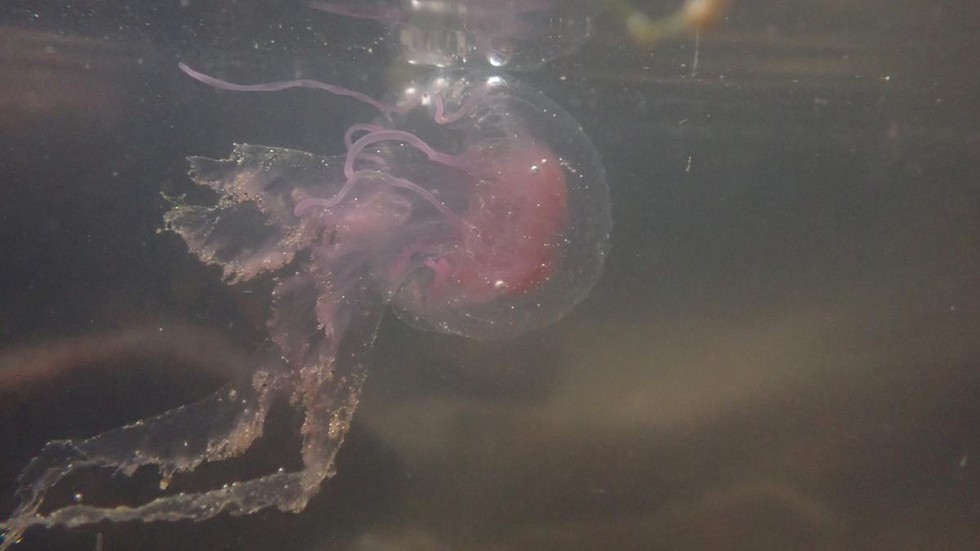An unusual occurrence of a venomous jellyfish bloom along the Visakhapatnam coast on April 3 has raised concerns among marine researchers and locals. The species, Pelagia noctiluca, known for its painful sting, poses risks to human health and marine ecosystems.
Description of the Event
Scores of Pelagia noctiluca, with diameters ranging from three to five centimeters, were observed along RK Beach and other coastal areas, surprising marine researchers conducting routine data collection exercises. The jellyfish were found both in the water and washed ashore, prompting concerns about public safety.
Characteristics of Pelagia noctiluca
Pelagia noctiluca, also called the mauve stinger or purple-striped jellyfish, is a venomous species rarely seen on the East coast of India. Unlike other jellyfish, it possesses stingers not only on its tentacles but also on its bell. Additionally, it exhibits bioluminescence, emitting light in dark environments.
Health Risks and Impact
Contact with Pelagia noctiluca can result in various illnesses, including diarrhoea, extreme pain, vomiting, and anaphylactic shock. The severity of these effects underscores the need for caution. Furthermore, jellyfish blooms, attributed to factors like rising ocean temperatures, can lead to significant economic and ecological consequences, affecting fishing industries and tourism.
Response and Recommendations
Marine biologists have urged the Visakhapatnam district administration to issue advisories and cordon off affected beach sections to prevent human contact with the jellyfish. Such proactive measures aim to mitigate risks until the species naturally disappears from the coast.
Multiple-Choice Questions (MCQs):
- What species of jellyfish caused the recent bloom along the Visakhapatnam coast?
- A) Aurelia aurita
- B) Pelagia noctiluca
- C) Cyanea capillata
- D) Chrysaora quinquecirrha
- Answer: B) Pelagia noctiluca
- Which of the following is a characteristic feature of Pelagia noctiluca?
- A) Lack of stingers on tentacles
- B) Non-venomous nature
- C) Bioluminescence
- D) Small diameter bell
- Answer: C) Bioluminescence
- What potential health risks are associated with contact with Pelagia noctiluca?
- A) Skin discoloration
- B) Muscle spasms
- C) Extreme pain and vomiting
- D) Increased appetite
- Answer: C) Extreme pain and vomiting
- What is a jellyfish bloom?
- A) A decrease in jellyfish population
- B) A sudden increase in jellyfish population
- C) A migration pattern of jellyfish
- D) A change in jellyfish coloration
- Answer: B) A sudden increase in jellyfish population
